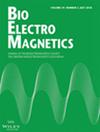求助PDF
{"title":"Differences in the Optical Response of MSU and CPP Crystals During Magnetic Orientation: Possibility of Diagnosing Gout and Pseudogout","authors":"Yuka Takeuchi, Ryotaro Yoshikawa, Yoshifuru Mitsui, Masakazu Iwasaka, Mizushi Matsuda, Atom Hamasaki","doi":"10.1002/bem.22444","DOIUrl":null,"url":null,"abstract":"<p>Pseudogout is crystalline arthritis. It has a similar clinical picture to that of gout, and it is difficult to distinguish the two diseases using conventional analysis methods. However, it is important to identify the different crystals responsible for these two cases because the treatment strategies are different. In a previous study, we reported magnetic orientation of monosodium urate (MSU) crystals, which are the causative agent of gout, at the permanent magnet level. In this study, we investigated the effect of an applied magnetic field on calcium pyrophosphate (CPP) crystals, which are the causative agent of pseudogout, and the difference in the magnetic responses of CPP and MSU crystals. We found that the CPP crystals were oriented in a magnetic field on milli-Tesla order because of the anisotropy of the diamagnetic susceptibility. In addition, the CPP crystals exhibited different anisotropic magnetic properties from those of MSU crystals, which led to a characteristic difference between the orientations of the two crystals. That is, we found that the causative agents of gout and pseudogout responded differently to a magnetic field. This report suggests that the discrimination between CPP and MSU by optical measurements is possible by application of magnetic fields appropriately. © 2023 Bioelectromagnetics Society.</p>","PeriodicalId":8956,"journal":{"name":"Bioelectromagnetics","volume":"44 7-8","pages":"204-210"},"PeriodicalIF":1.2000,"publicationDate":"2023-05-08","publicationTypes":"Journal Article","fieldsOfStudy":null,"isOpenAccess":false,"openAccessPdf":"","citationCount":"1","resultStr":null,"platform":"Semanticscholar","paperid":null,"PeriodicalName":"Bioelectromagnetics","FirstCategoryId":"99","ListUrlMain":"https://onlinelibrary.wiley.com/doi/10.1002/bem.22444","RegionNum":3,"RegionCategory":"生物学","ArticlePicture":[],"TitleCN":null,"AbstractTextCN":null,"PMCID":null,"EPubDate":"","PubModel":"","JCR":"Q3","JCRName":"BIOLOGY","Score":null,"Total":0}
引用次数: 1
引用
批量引用
Abstract
Pseudogout is crystalline arthritis. It has a similar clinical picture to that of gout, and it is difficult to distinguish the two diseases using conventional analysis methods. However, it is important to identify the different crystals responsible for these two cases because the treatment strategies are different. In a previous study, we reported magnetic orientation of monosodium urate (MSU) crystals, which are the causative agent of gout, at the permanent magnet level. In this study, we investigated the effect of an applied magnetic field on calcium pyrophosphate (CPP) crystals, which are the causative agent of pseudogout, and the difference in the magnetic responses of CPP and MSU crystals. We found that the CPP crystals were oriented in a magnetic field on milli-Tesla order because of the anisotropy of the diamagnetic susceptibility. In addition, the CPP crystals exhibited different anisotropic magnetic properties from those of MSU crystals, which led to a characteristic difference between the orientations of the two crystals. That is, we found that the causative agents of gout and pseudogout responded differently to a magnetic field. This report suggests that the discrimination between CPP and MSU by optical measurements is possible by application of magnetic fields appropriately. © 2023 Bioelectromagnetics Society.
磁取向过程中MSU和CPP晶体光响应的差异:诊断痛风和伪痛风的可能性。
假性关节炎是结晶性关节炎。它与痛风有相似的临床表现,用常规的分析方法难以区分这两种疾病。然而,重要的是要确定不同的晶体负责这两种情况,因为治疗策略是不同的。在之前的一项研究中,我们报道了尿酸钠(MSU)晶体的磁性取向,这是痛风的病因,在永磁水平。在本研究中,我们研究了外加磁场对焦磷酸钙(CPP)晶体的影响,以及CPP晶体和MSU晶体的磁响应差异。我们发现,由于抗磁化率的各向异性,CPP晶体在磁场中定向为毫特拉量级。此外,CPP晶体与MSU晶体表现出不同的各向异性磁性,这导致两种晶体的取向特征存在差异。也就是说,我们发现痛风和伪痛风的致病因子对磁场的反应不同。本文认为,通过适当地施加磁场,可以通过光学测量来区分CPP和MSU。©2023生物电磁学学会。
本文章由计算机程序翻译,如有差异,请以英文原文为准。


